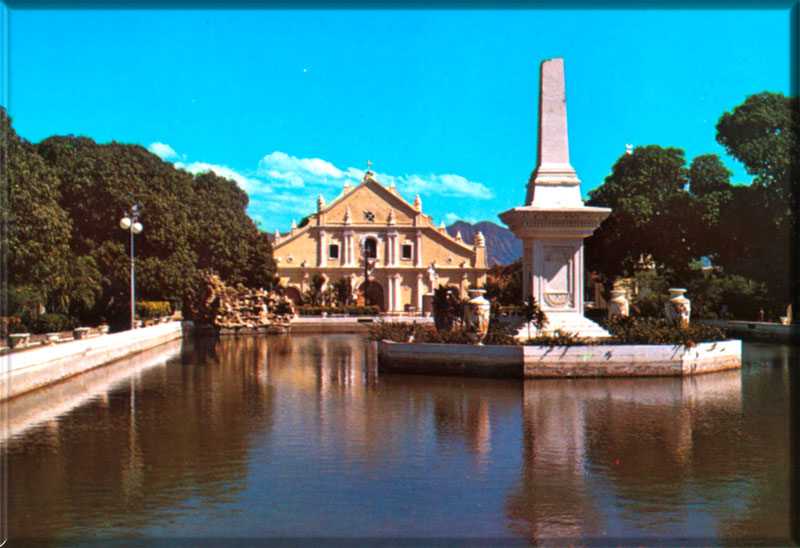|
Philippines
in Pictures
Home
Historical
Landmarks
Religious
Sceneries
|
St.
Augustine Church (Paoay Church)
Ilocos Norte
 St.
Augustine Church (most popularly known as "Paoay
Church") was built in 1694 commissioned by the
Augustinian friars led by Fr. Antonio Estavillo. The
Church was completed in 1710 and rededicated in 1896.
Considered as the most outstanding variant of the
"earthquake Baroque", Paoay Church was built
of baked bricks, coral rocks, salbot (tree
sap) and lumber, and has 24 carved buttresses. The
lower part of the facade was made of stuccoed brick
while the upper facaed is made of coral blocks. Local
materials were said to be made of mixing sand , lime,
sugarcane juice and then boiling the mixture with
mangeao (salbot) leaves, leather and rice straw
for two nights. Its belltower, which is detached
from its main building,
is made of coral stone and was used by the Katipuneros
as an observation post in 1896 and again by Filipino
soldiers during World War II. Earthquakes damaged
portions of the church in 1865 and 1885. In an excavation
conducted inside the church in 2000, a prehistoric
human skeleton and fragmented ceramics were discovered
and are now on display at the National Museum. The
Paoay Church was declared a national treasure by then
President Ferdinand Marcos. Now included in UNESCO's
World Heritage List, Paoay Church had revealed several
structural decays after centuries of exposure to the
elements and will soon undergo restoration under the
auspices of UNESCO. St.
Augustine Church (most popularly known as "Paoay
Church") was built in 1694 commissioned by the
Augustinian friars led by Fr. Antonio Estavillo. The
Church was completed in 1710 and rededicated in 1896.
Considered as the most outstanding variant of the
"earthquake Baroque", Paoay Church was built
of baked bricks, coral rocks, salbot (tree
sap) and lumber, and has 24 carved buttresses. The
lower part of the facade was made of stuccoed brick
while the upper facaed is made of coral blocks. Local
materials were said to be made of mixing sand , lime,
sugarcane juice and then boiling the mixture with
mangeao (salbot) leaves, leather and rice straw
for two nights. Its belltower, which is detached
from its main building,
is made of coral stone and was used by the Katipuneros
as an observation post in 1896 and again by Filipino
soldiers during World War II. Earthquakes damaged
portions of the church in 1865 and 1885. In an excavation
conducted inside the church in 2000, a prehistoric
human skeleton and fragmented ceramics were discovered
and are now on display at the National Museum. The
Paoay Church was declared a national treasure by then
President Ferdinand Marcos. Now included in UNESCO's
World Heritage List, Paoay Church had revealed several
structural decays after centuries of exposure to the
elements and will soon undergo restoration under the
auspices of UNESCO.
Vigan
Cathedral
Vigan Park, Ilocos Sur

The
first Vigan Cathedral was ordered built in 1574
by Juan de Salcedo. Another version of the church
was again constructed in 1641. The persent baroque-style
building was completed in 1800. The Cathedral has
a main altar with beaten-silver panels. Its bell
tower stands separately in Plaza Burgos.
The Fu dogs design carved above its
outermost doors is testament to Vigan's strong Chinese
heritage.
More
pictures...
|


